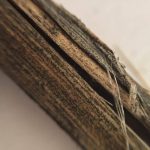
Tag Archives blackleg

Verticillium may undermine canola blackleg resistance
Verticillium stripe may compromise blackleg resistance protection in canola, new research out of Manitoba suggests

Steps to stop blackleg in canola
Agronomists and canola growers have many proven steps to manage blackleg disease in canola. Genetic resistance has been an extremely effective tool, and will remain so — as long as that resistance matches the blackleg races in a field

Back to blackleg
Lab-testing canola stem samples can help verify the disease and its specific race

Machine learning may help get a leg up on blackleg
AI-backed research results may help growers better manage the risk of blackleg in canola crops
Researchers to put numbers to verticillium yield loss
The team behind blackleg and clubroot yield loss models tackles the newer canola disease

Disease testing uptake low despite benefits
Canola disease tests help growers better manage their fields

Take verticillium stripe in canola seriously
A Manitoba farmer warns others about the threat this disease poses to canola production

New products, genetic tools aimed at key crop diseases
It takes a multi-pronged approach to control diseases that constantly change

Blackleg is still a threat for canola
Resistant hybrids may not be enough to keep your fields safe from this canola disease

And the canola disease surveys say…
The 2020 numbers on blackleg, sclerotinia stem rot, clubroot, verticillium stripe and others across the Prairies


